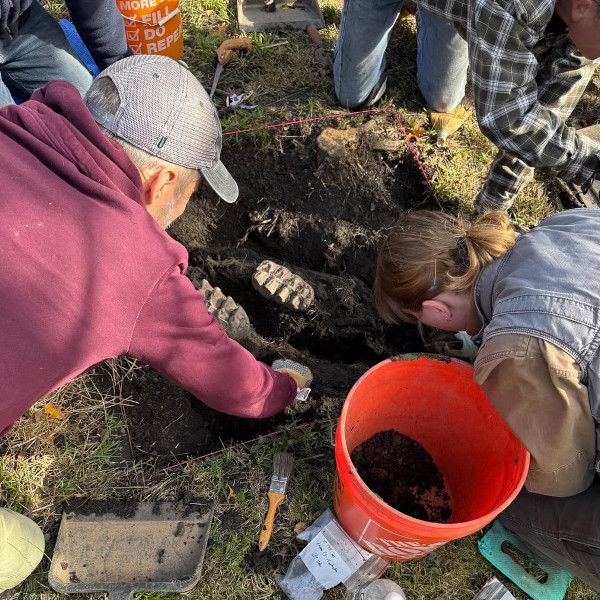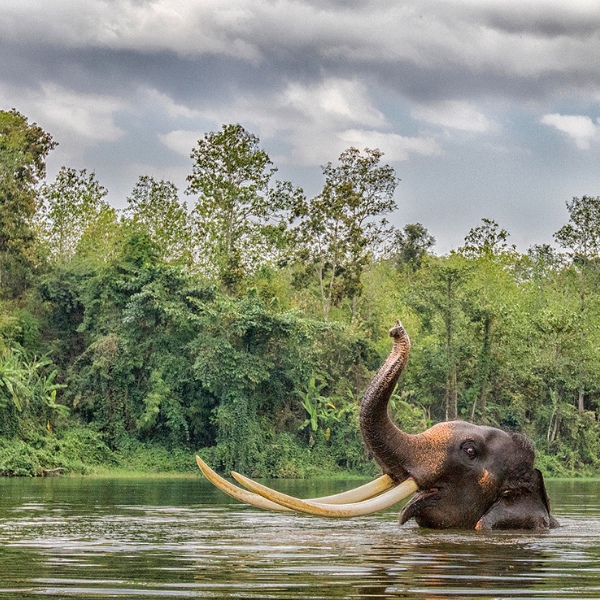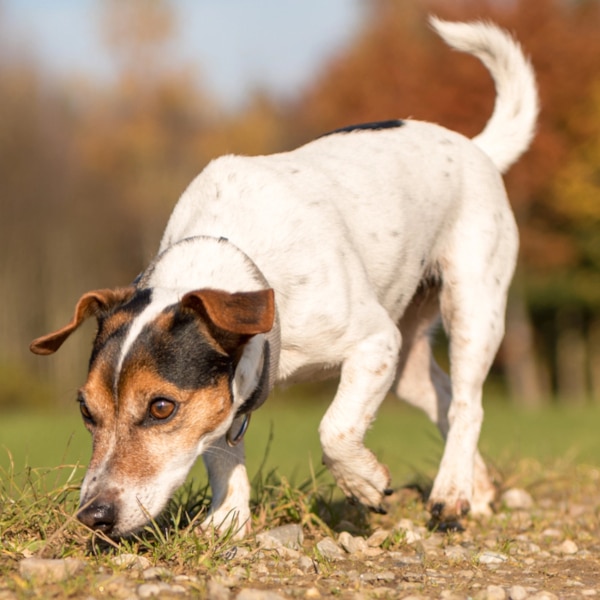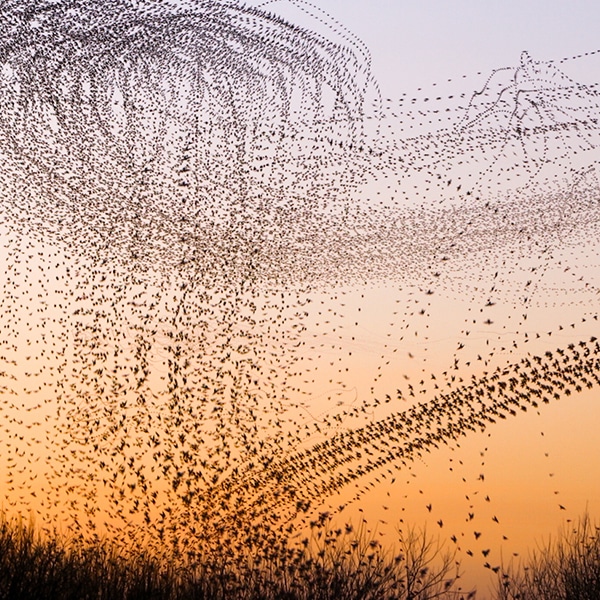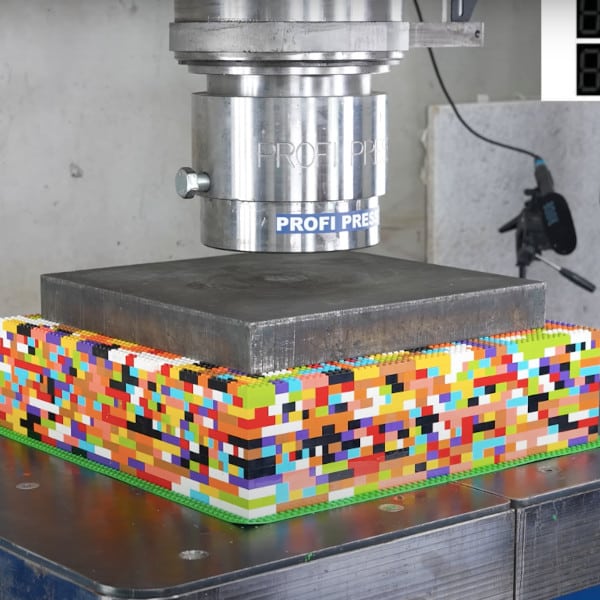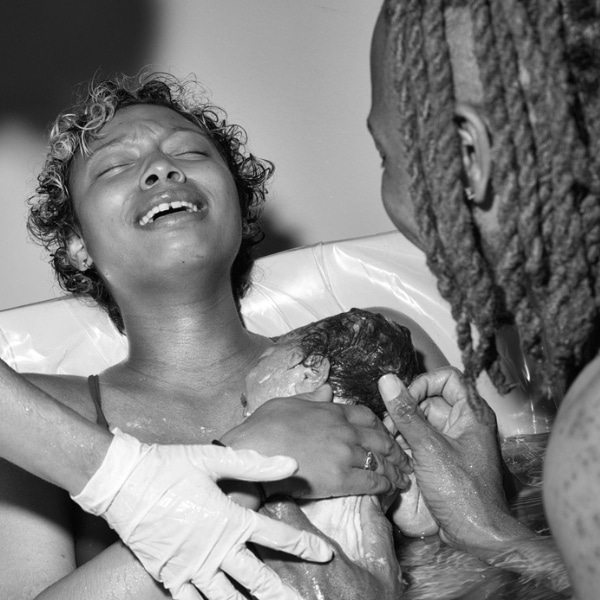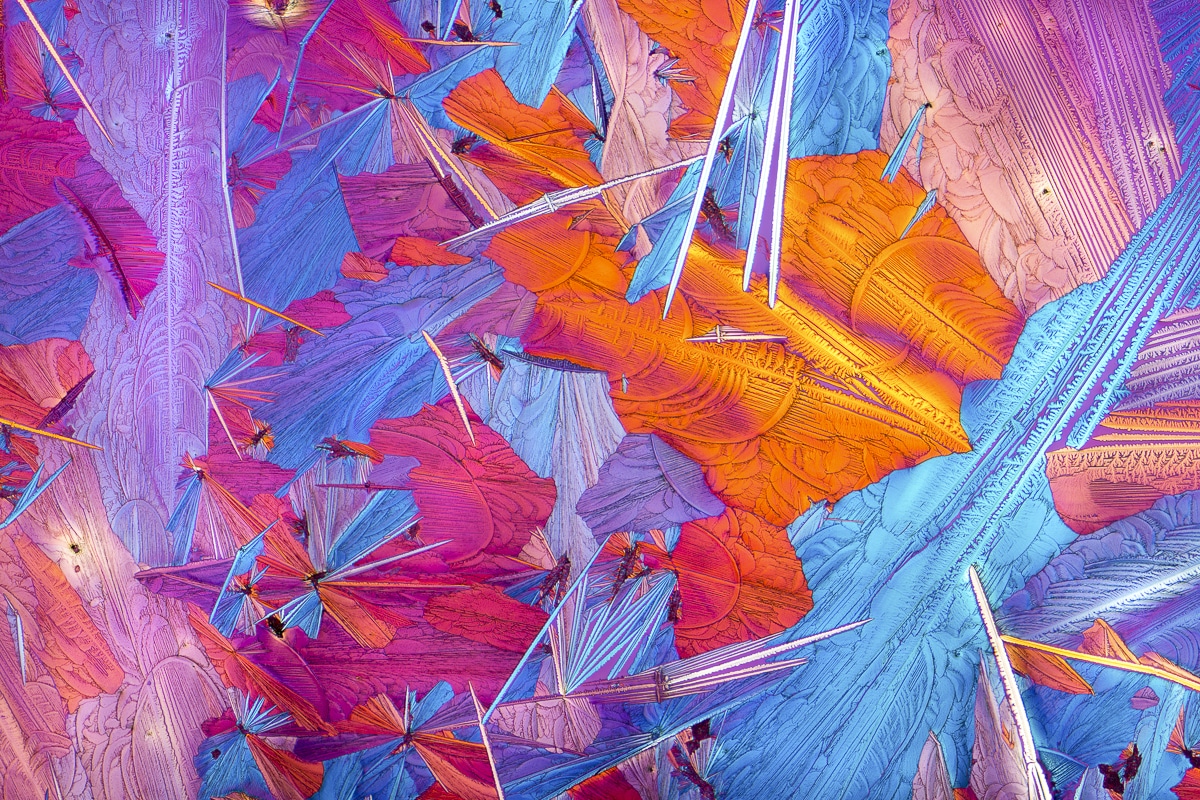
Sulfamic acid
Photographer Justin Zoll builds what he calls “nature's smallest landscapes,” building up psychedelic images of chemical substances through photomicrography. Placing crystallized substances like menthol and ascorbic acid under a microscope, Zoll is able to capture incredible, abstract panoramas that at first glance, seem more like the work of an Abstract Expressionist than a photographer.
Each image is mesmerizing, with the same substances taking on a different appearance depending on how they crystallize and the light filters through. As Zoll is also a talented landscape photographer, he brings this eye to the optical microscopy, selecting specific details and areas of each slide to create a hypnotic, colorful composition that flows beautifully.
We had the opportunity to speak with Zoll about his Microscopy series and how this creative outlet, all done from the comfort of his bedroom, informs his photography, as well as what's coming next. Read on for our exclusive interview.
With Microscopy, photographer Justin Zoll proves that “beauty exists on every scale.”
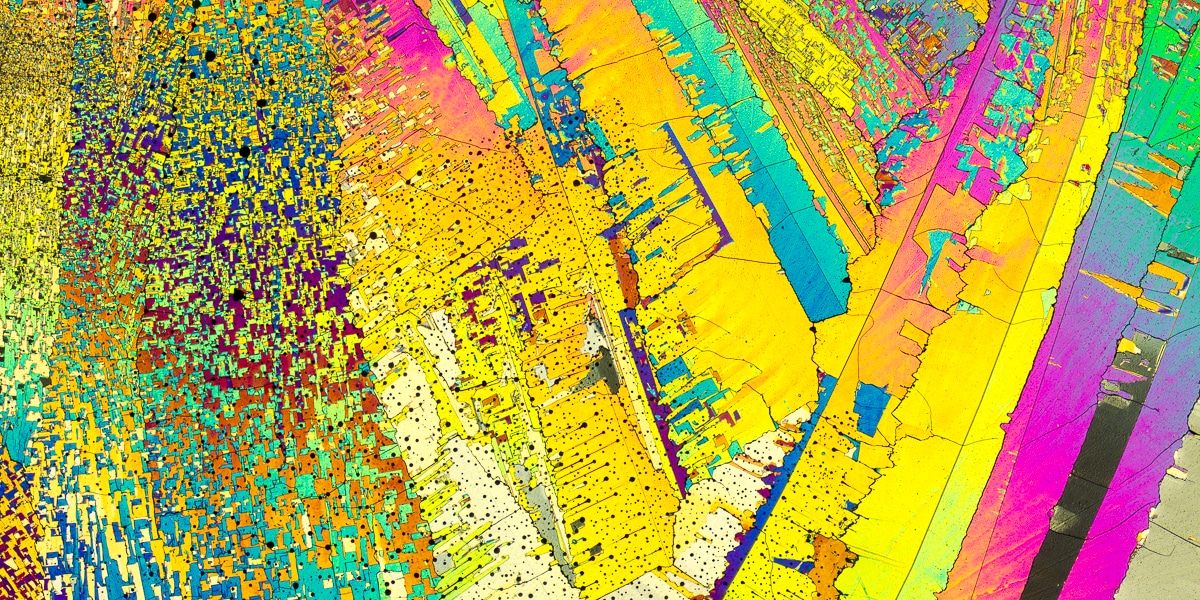
Sulfur

L-Glutamine and beta alanine
How did you get started in photography?
I received an entry-level digital SLR for my eighteenth birthday and have been hooked ever since. I started out photographing everything around me with little to no technical knowledge, but quickly learned what I needed to. I spent a few years shooting every live band I could get to as well as exploring my hometown of Ithaca, NY to photograph our many waterfalls.
Eventually, I started doing weddings, getting press passes to bigger shows, and ended up being hired as the staff photographer for The Ithaca Times. These days I photograph weddings as a team with my younger sister Heather Skye (a very talented photographer). I gave her my first SLR when she was about 18 and she took to it just like I did. My greatest pleasures in photography are still photographing landscapes, wildlife, and live music.
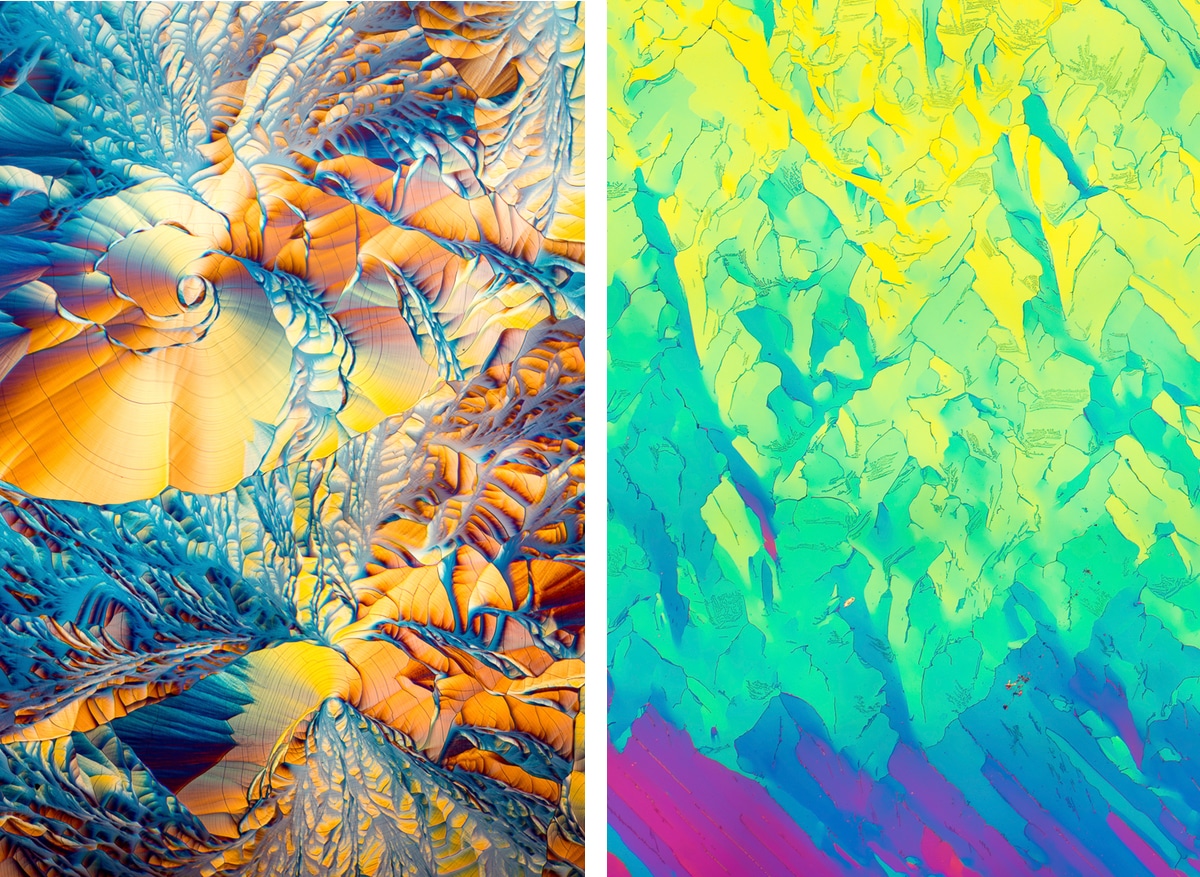
Left: L-Glutamine and beta alanine | Right: Naphthalene
You photograph a wide variety of subjects—from landscapes to weddings—what got you interested in microscopy?
About two years ago, my good friend and all around mad scientist Nick Taylor brought out his microscope while we were hanging out one night. We experimented with attaching my camera to his scope and ended up taking some glamour shots of a deceased house fly. From there I was hooked.
I've always been extremely interested in science and technology; photomicrography seemed the perfect union of my interests. Not having a formal education in chemistry or photography, it's been a great way to educate myself.
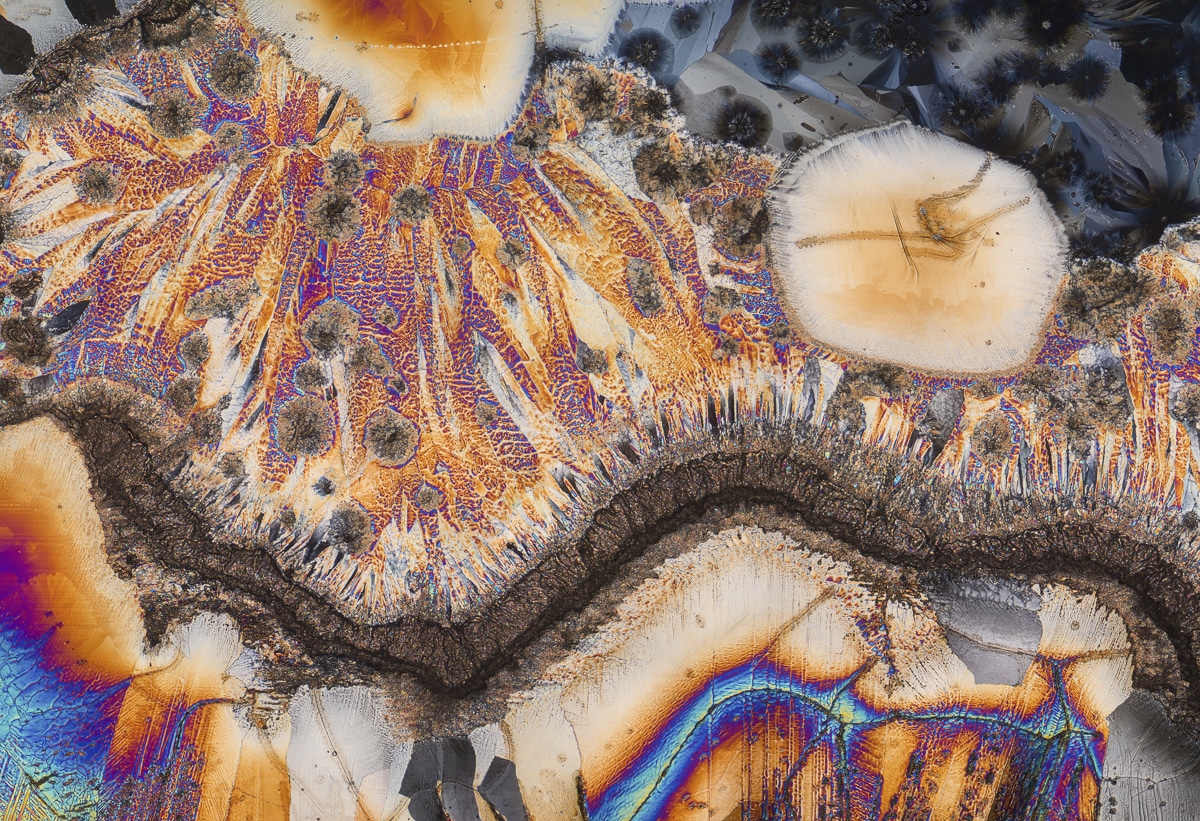
Epsom salt
Can you share a bit about your creative process and how you go about these shoots?
There's a lot of trial and error! Once I've selected the substance I intend to work with I have to figure out how to crystallize it. Some can simply be melted and will crystallize during cooling. Others must first be dissolved in a solvent and then allowed to dry. Different chemicals are soluble in different solvents so there is certainly some chemistry to learn along the way.
Once my samples are crystallized on glass slides, I explore them through my microscope. It can take many, many slides of the same substance for me to find a suitable composition. Once I think I've found an area I'd like to shoot, I take a series of up to 100 shots in a grid pattern, which I later assemble into a panorama. I always look at these slides in the same way I do a landscape. You can't simply point a camera in any direction in nature and get a beautiful image. The same is very much true here.
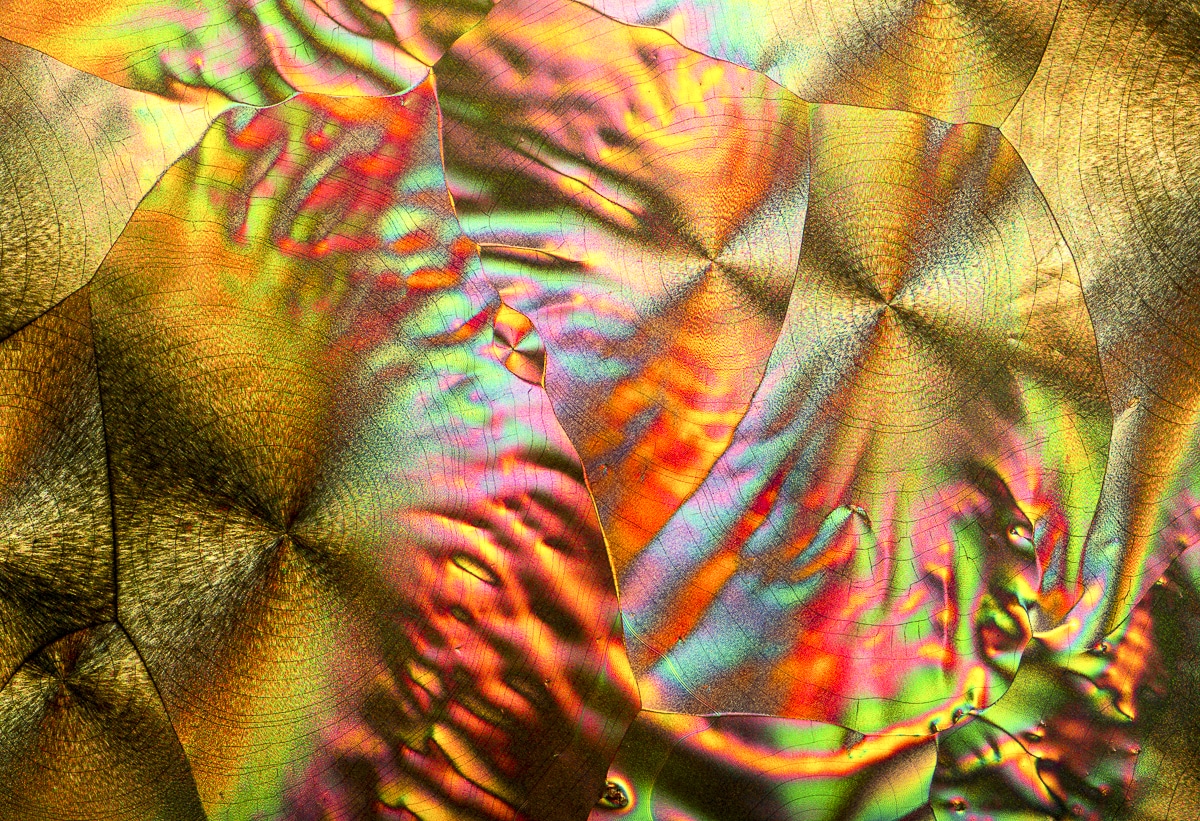
Ascorbic acid
What sort of equipment do you use?
Currently, I use an Olympus BH2 microscope which I picked up for a few hundred dollars on eBay. I've made a rig to attach my Canon 5DMKIII using PVC pipe and an old body cap. My most often used objective lens is a Nikon Plan Apo 4x. Coupled with the 10x of my ocular lens this gives me 40x magnification in my photos.
The solvent I use most often is actually just very high proof vodka, as many things are soluble in ethanol. I've written “for lab use only” on it in Sharpie so that it isn't accidentally consumed by my housemate or myself.
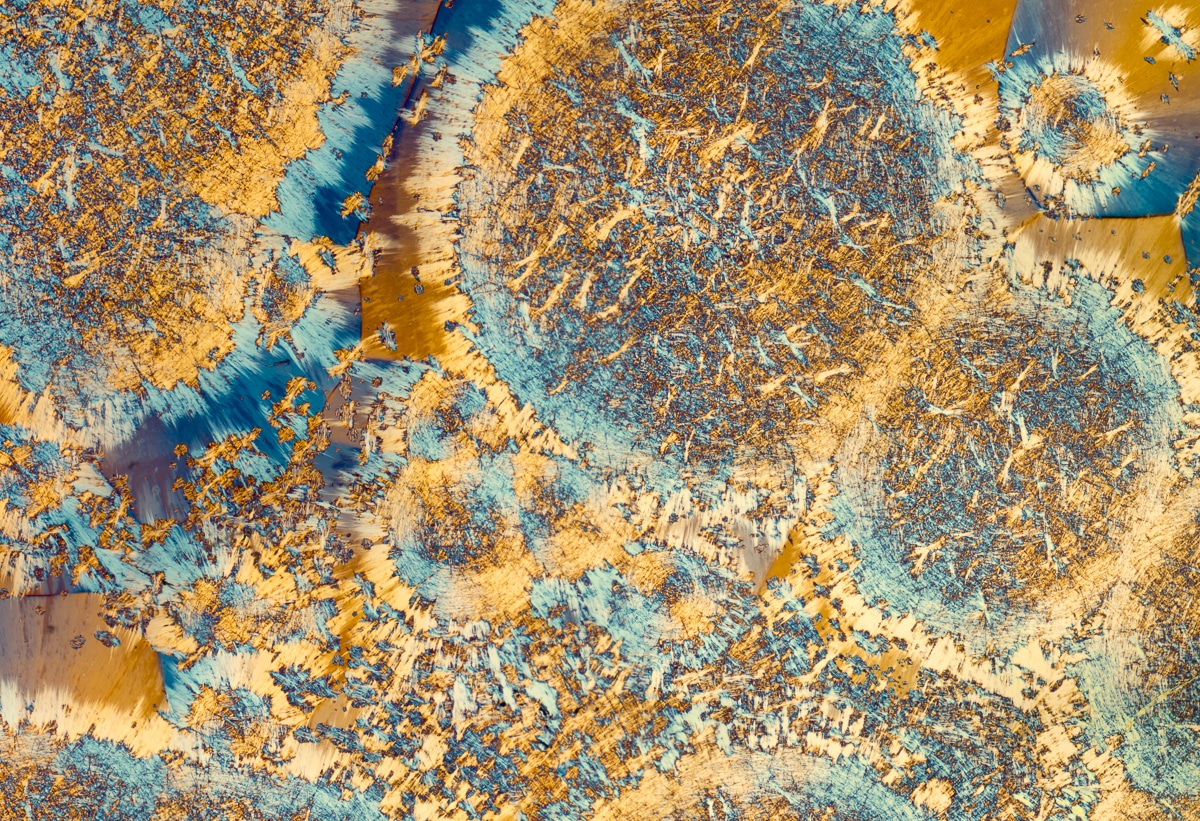
Menthol
How do you go about selecting the substances to put under the microscope?
I'll try just about any pure substance I can get my hands on. Often it’s a safe bet to try things that already come in a crystalline form such as sugar, salts, and some supplement powders. Since I’ve had such good luck with amino acids recently, I've purchased as many as I could find.

Left: L-Glutamine and beta alanine | Right: L-Glutamine and beta alanine
Is there any substance that has surprised you with the results?
Menthol has been a favorite of mine for a while now. You can purchase pure menthol fairly cheaply, and depending on how you crystallize it, it shows off an amazing variety of forms. My other current favorite is the mixture of the amino acids L-Glutamine and Beta Alanine. Together they make some of the most organic and three-dimensional structures I've seen so far.
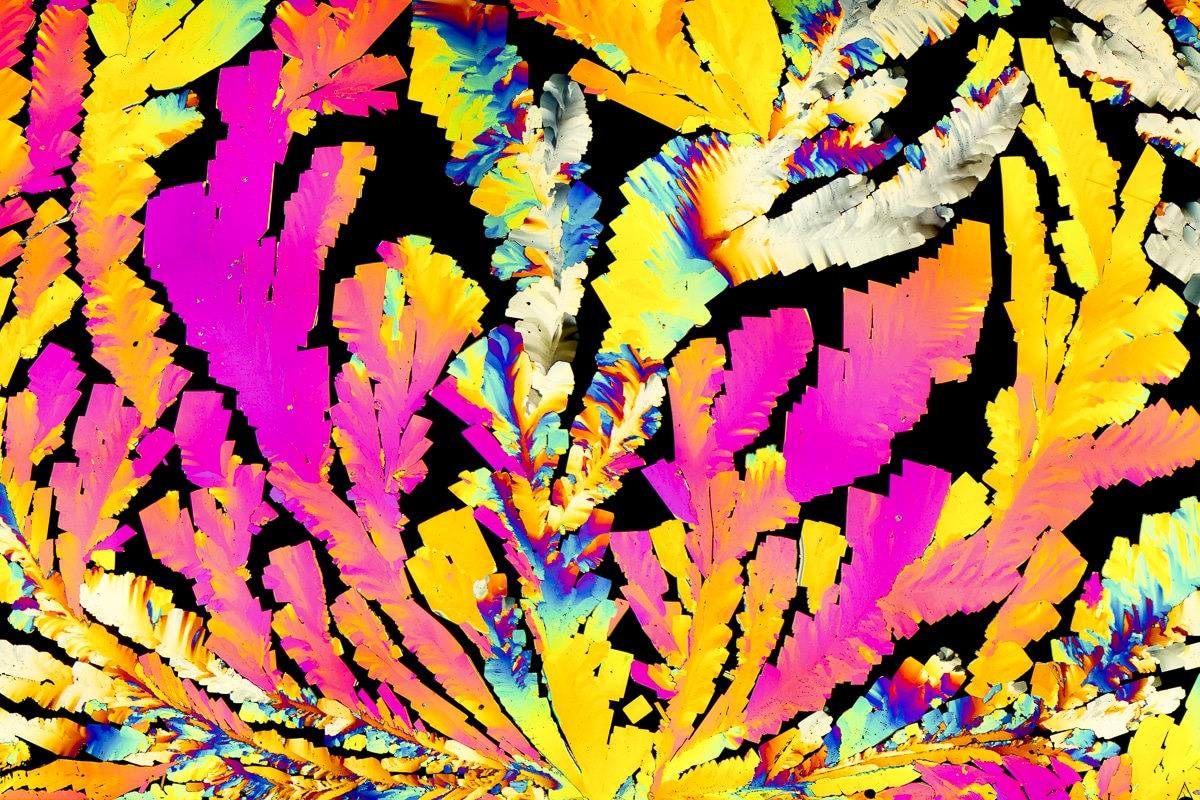
MDMA
The images are so bright and colorful, almost like abstract paintings. What’s your post-production process?
The colors in my images are the result of the use of polarizing filters. One filter goes over my light source and then another between the sample and my sensor. This polarization of light interacts with the birefringent properties of the crystals producing the colors you see. As I rotate either polarizer, I get a wide variety of color palettes, some more revealing of the crystal structures than others.
This is to say, the images do indeed look as colorful right through the eyepiece of the scope as they do when I export them. My post processing is really 95% panorama assembly and cropping. Usually, Lightroom is sufficient for making my panoramas but for the really large ones I turn to Autopano Giga. The only other processing I might do is slight exposure adjustment and sharpening…maybe a little dust removal.
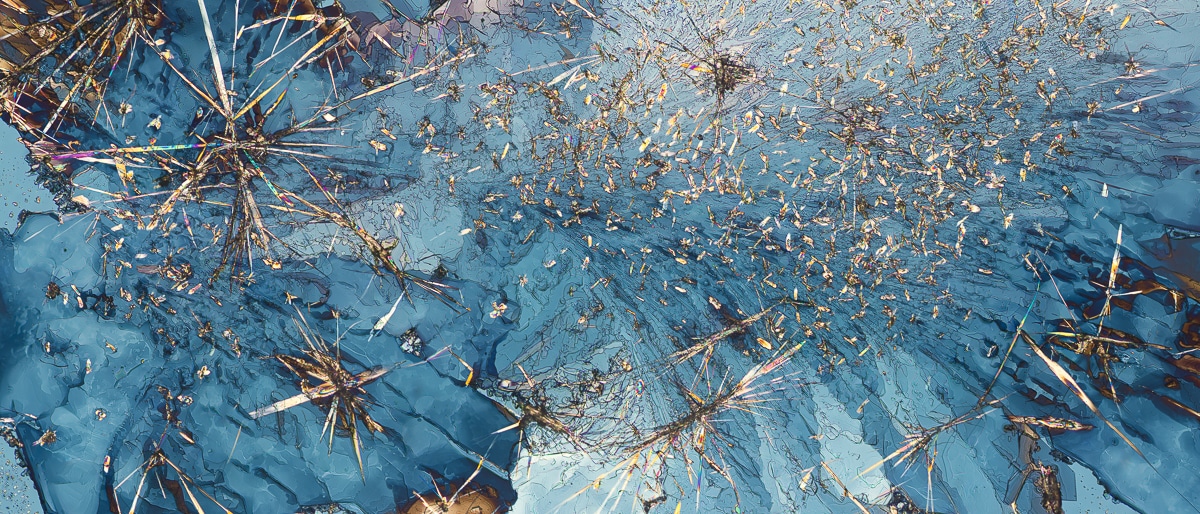
Sulfamic acid and vanillin
What sort of creative satisfaction does the Microscopy series give you?
I get to sit in my bedroom and explore seemingly vast landscapes that I can create on small glass slides. Each is unique and I'm constantly surprised by what I find. I can't ask for any better creative outlet right now. It's also exciting because though there are some others out there doing this kind of work, it's still relatively unheard of. Most people have seen some fantastic shots of Tunnel View at Yosemite, but few have seen the microscopic crystal structure of say, vitamin C.

Gabapentin
What’s one substance you haven’t yet shot that you can’t wait to try?
Well, I can't say that I intend to acquire any but I've always been very curious to see what forms LSD might take. More realistically, I'd very much like to get my hands on some L-DOPA, which is a precursor for dopamine.
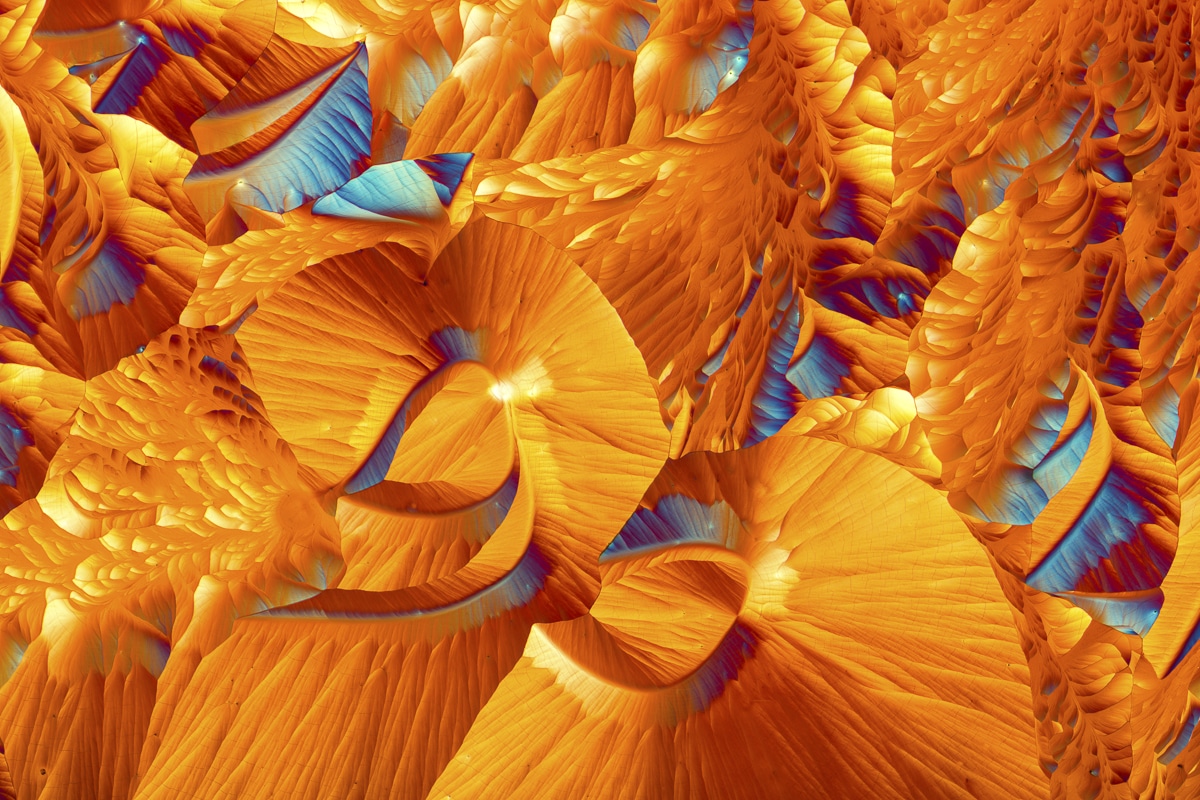
L-Glutamine and beta alanine
What do you hope people take away from the work?
I'd very much like to give people a chance to appreciate the intricacy and beauty of nature on a scale they might not be familiar with. Sweeping landscapes and colorful creatures are, of course, beautiful, but that beauty exists on every scale. I'm happy to be able to share my appreciation of this often unseen world.
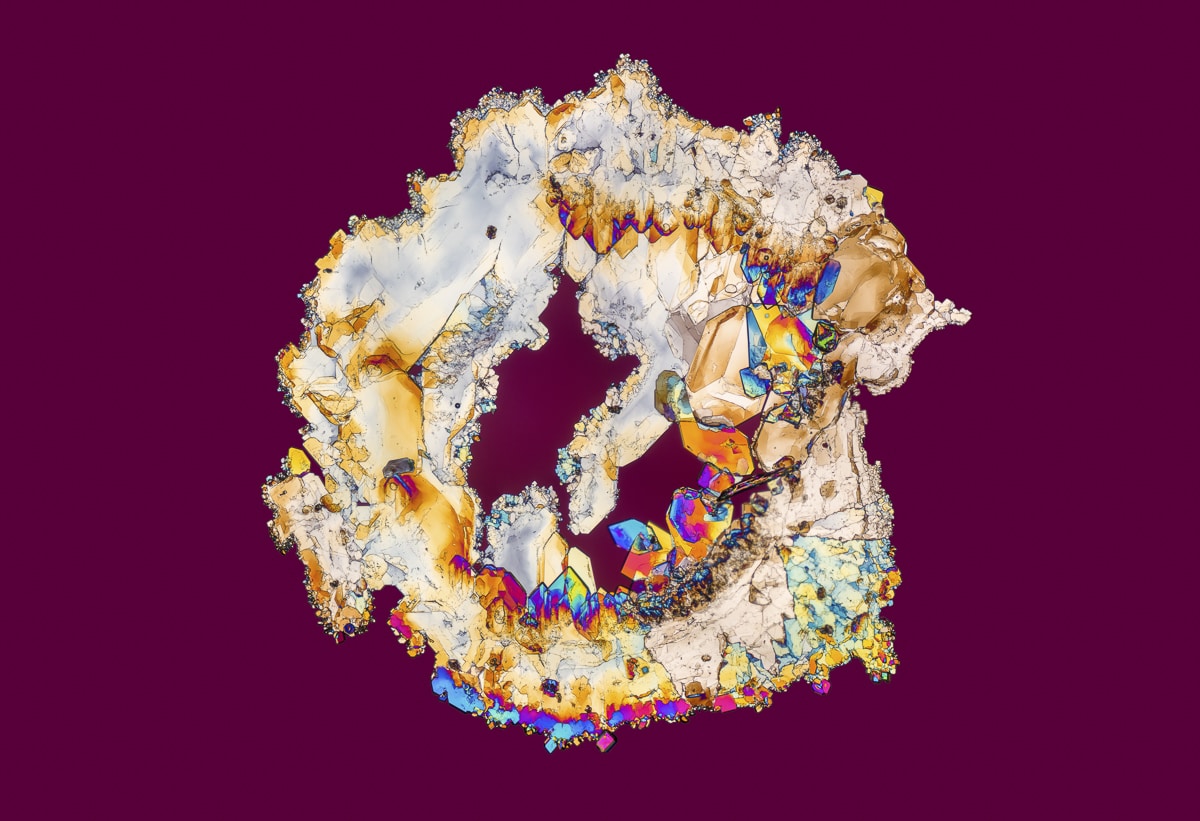
Sulfamic Acid
What’s next?
I would very much like to hang a show in a gallery in the near future. This would mean printing my images much larger than I have thus far. Luckily they are very large files and could easily be printed several feet wide. Of course, I'm always looking for new things to photograph and would love to get some new equipment to play with as well. Perhaps some accessories which allow for different types of specimen viewing/illumination. Most of all, I look forward to exploring other avenues for merging art and science. There's still a lot of untouched territory here.
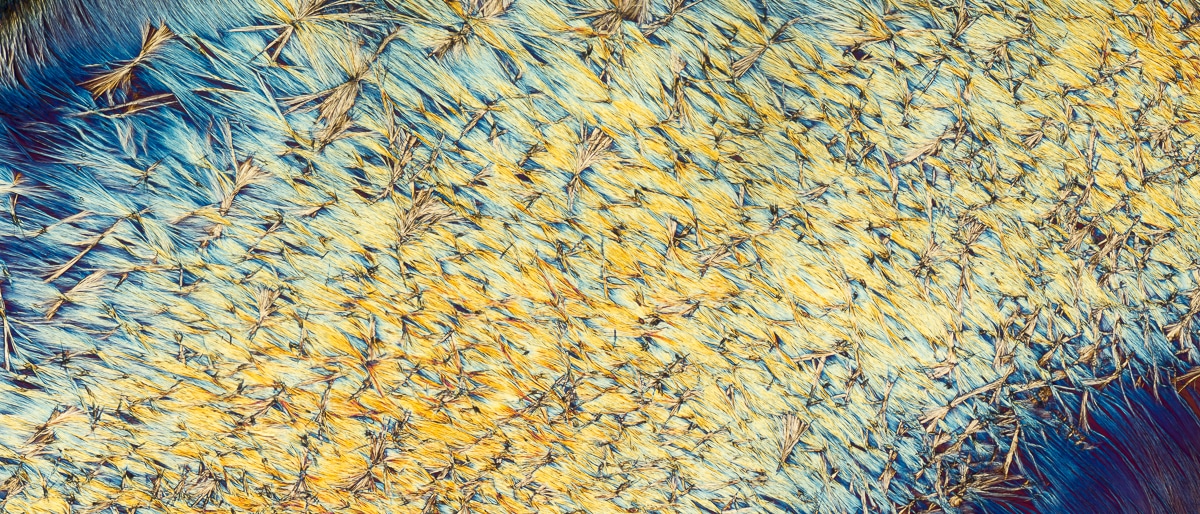
Menthol
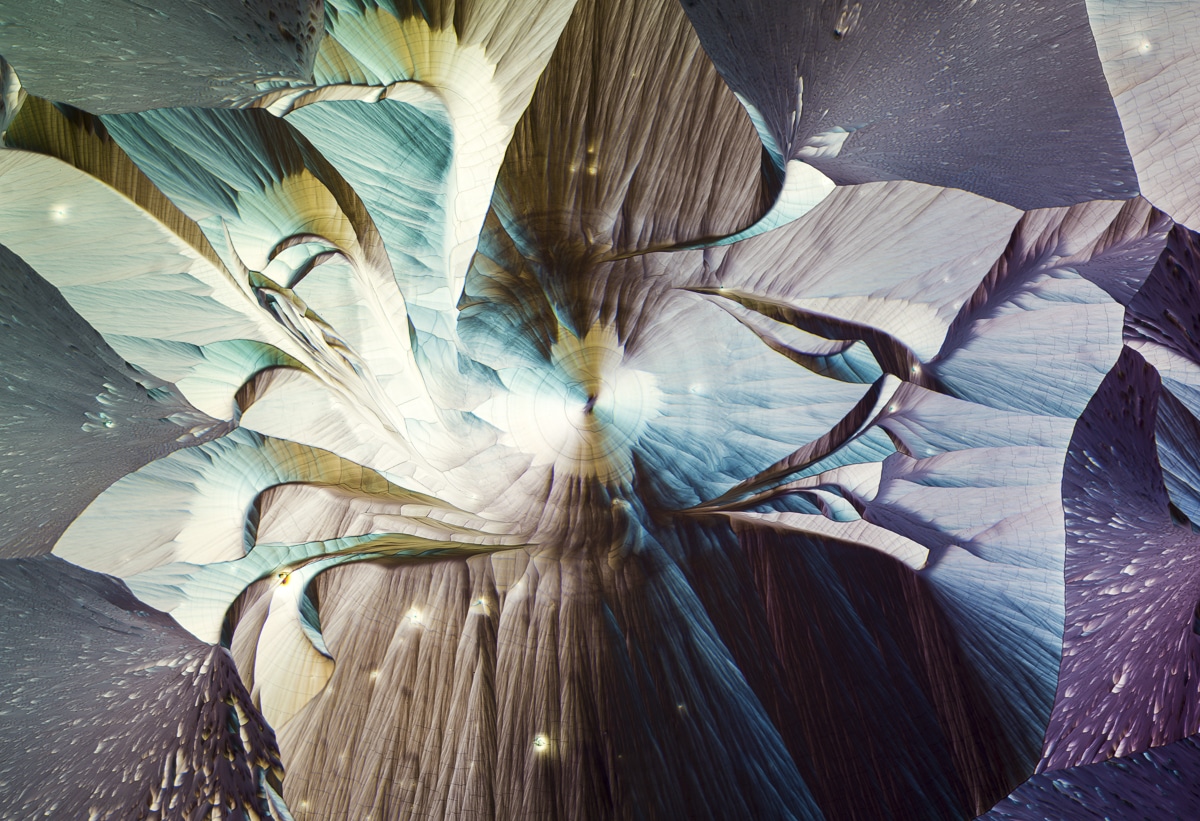
L-Glutamine, beta alanine, and taurine
Justin Zoll: Website | Facebook | Instagram
My Modern Met granted permission to use photos by Justin Zoll.
Related Articles:
Invisible Details of Tiny Creatures Uncovered with Laser-Microscope Photos
Favorite Alcoholic Drinks Look Stunningly Colorful Under a Microscope
Stunningly Surreal Landscapes Made from Stacking Hundreds of Microscopic Images















































































